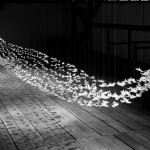 Appel à communication des organisateurs du colloque annuel de 2013 de l’Association des historiens de l’art du Royaume-Uni pour la session portant sur « The Permanence of the Transient : Precariousness in Art »
Appel à communication des organisateurs du colloque annuel de 2013 de l’Association des historiens de l’art du Royaume-Uni pour la session portant sur « The Permanence of the Transient : Precariousness in Art »
‘Precariousness’ is often related to the notion of transience : perishable materials, ‘dematerialized’ conceptual procedures and fragile work conditions. Despite its transitory status, precariousness remains a prominent concept among artists and theoreticians today. In 1967, Brazilian artist Hélio Oiticica explicitly made precariousness a poetic guide for the artistic world. He described the artist’s condition in Brazil as precarious, writing, « in adversity we strive. » This motto also referred to the use of unconventional materials in Neoconcrete artworks, such as in Oiticica’s famous Parangolés, colourful capes made of plastic and cheap fabrics that should be worn and performed by the public. Additionally, it referred to his aesthetic choice to leave the artwork unfinished, inviting the audience to complete it. Precariousness also became the trademark of other movements such as Arte Povera, which used ‘poor materials’ in an attempt to break down the dichotomy between art and life. However,precariousness in art can be extended beyond these manifestations. It can refer to the artist’s adverse work conditions, including living under a totalitarian regime as well as the lack of institutional support and of an established art scene. For instance, in times of censorship and in places without an institutional structure artists were propelled to come up with impromptu solutions to produce their artwork, as in Mail Art and in Latin American Conceptualism.
Thus, can precariousness result in a fruitful production, with artists being stimulated to think beyond the traditional realm, improvising artistic strategies ? But when is precariousness in art an aesthetic choice,? When is it a situational condition ? Which are the multiple ways that we can understand precariousness today ? Which artists/movements explored the idea of precariousness ? Which are the ethical issues raised by precariousness as a chosen aesthetics ?
Welcoming papers exploring different geographic and temporal frames of reference, this panel aims to re-examine the issue of precariousness and its outcomes in art. Please send proposals for 30-minute papers to both convenors by 12 November 2012 :
Camila Maroja, Duke University, camila.maroja@duke.edu
Caroline Menezes, University of the Arts London, UAL, carolinemenezes@gmail.com
Proposals should be sent using the paper proposal form at http://www.aah.org.uk/annual-conference/sessions2013

Leave a Reply
You must be logged in to post a comment.